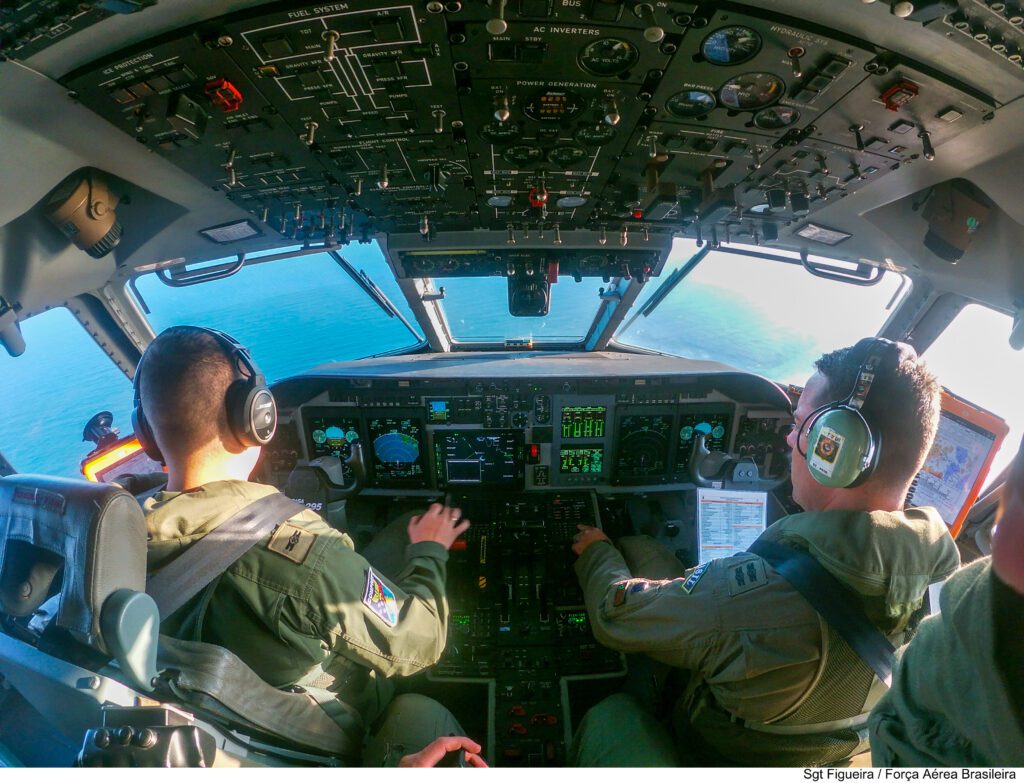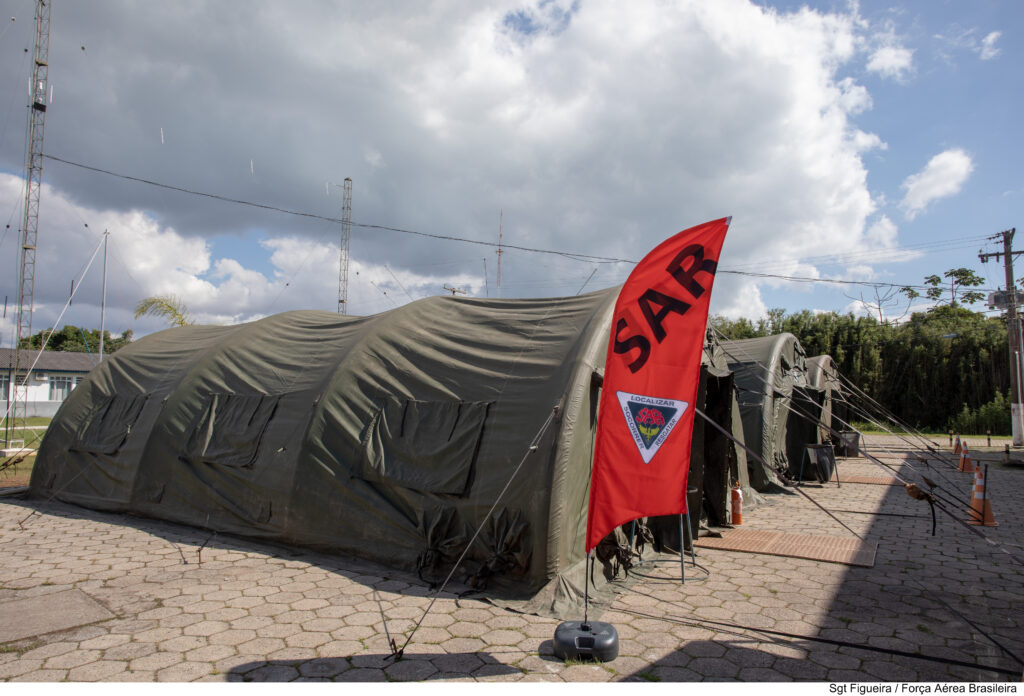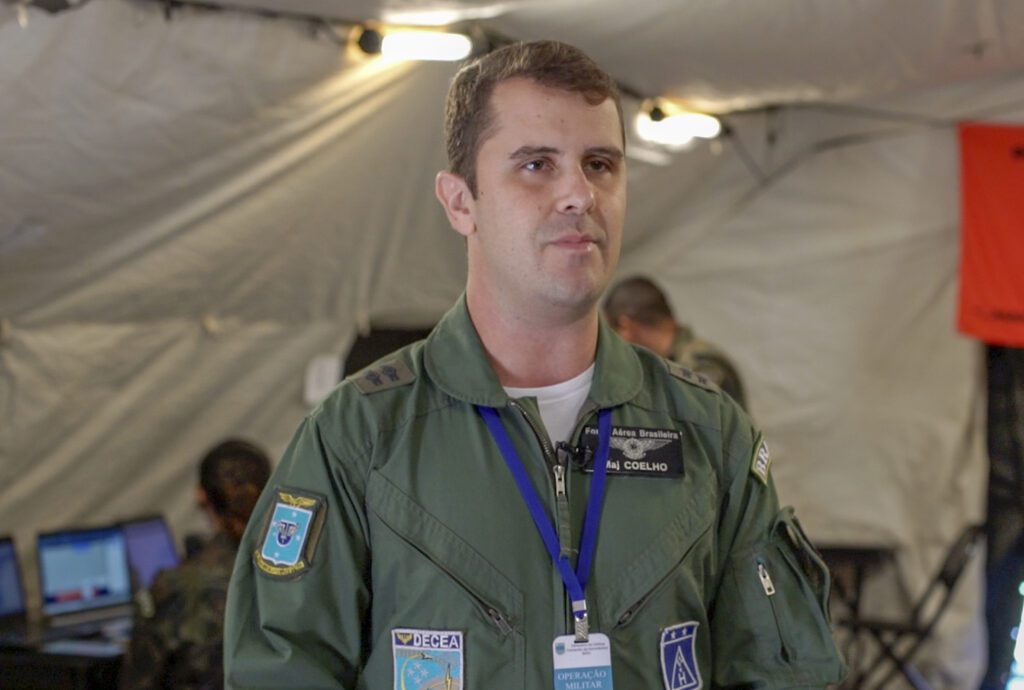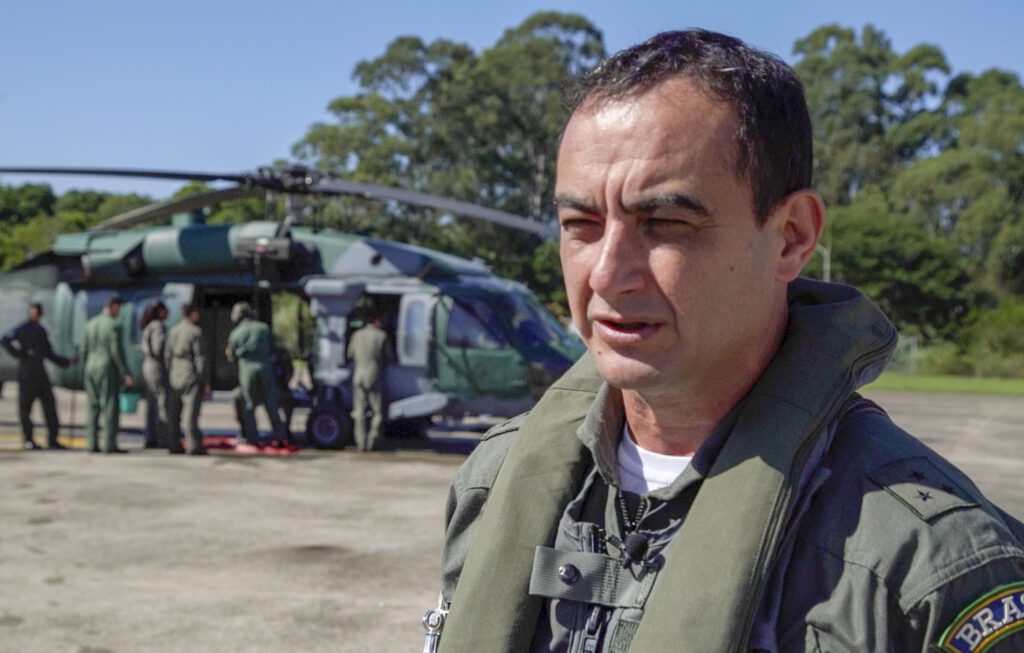FAB military personnel carried out search and rescue simulations on land and sea for 15 days at the Florianopolis Air Base
Air Force Agency, Lieutenant Wanessa Liz
To train crews to perform Search and Rescue Air Force actions in a realistic scenario, with the purpose of training the squadrons and improving tactics, techniques and procedures, in land and sea environments. This is the context of the Operational Exercise (EXOP) Carranca, held from April 27th to May 12th, at Florianópolis Air Base (BAFL).
The activities took place under the direction of the Canoas Air Base (BACO) and included the participation of more than 200 military personnel from the most diverse units of the Brazilian Air Force (FAB), as well as two aircraft from the Patrol Aviation and three from the Search and Rescue Aviation, which together reached 250 flight hours in the operation.
During the training, the squadrons applied their knowledge of search and rescue and simulated several rescue situations in areas of difficult access, both on land and at sea. These activities aim to ensure operational efficiency and readiness in the use of Air Force resources.
The military personnel who work in this area deal with complex challenges, such as adverse weather conditions, remote regions, and the need to rescue people in imminent risk situations. Teamwork is essential to maintain the ability to respond quickly to these kinds of challenging situations. Through training like this, FAB remains prepared to respond to any eventuality, reinforcing its mission to serve and protect society.
Squadrons’ Performance

The Squadrons involved in search, rescue and salvage operations in the national territory are responsible for assisting aircraft in emergencies, such as accidents, crashes or disappearances, as well as rescuing people in areas of difficult access.
Besides Search and Rescue actions, the Squadrons also play an important role in humanitarian support operations, such as organ transportation, assistance to victims of natural disasters and support in international search and rescue missions.
Participating in the exercise were the First Squadron of the Seventh Aviation Group (1º/7th GAV) – Orungan Squadron; the Second Squadron of the Seventh Aviation Group (2º/7th GAV) – Phoenix Squadron; the Third Squadron of the Seventh Aviation Group (3º/7th GAV) – Neptune Squadron; the Second Squadron of the Tenth Aviation Group (2º/10th GAV) – Pelican Squadron; the Airborne Rescue Squadron (EAS) – PARASAR; the Search and Rescue Division (DSAR) of DECEA; the First Squadron of the First Command and Control Group (1º/1st GCC) – Profeta Squadron; the Aircraft Rescue Coordination Centers (SALVAERO – Brasília, Curitiba, Recife and Manaus) and SALVAMAR SUL of the 5th Naval District Command of the Brazilian Navy. Naval District of the Brazilian Navy.
Communications and Control

Aiming at consolidating the doctrine of aerial missions consisting of training and military air employment in joint actions, EXOP Carranca counted on a complex telecommunications infrastructure, and with great planning and training of the participants from several multidisciplinary specialties.
The coordination of Airspace Control in EXOP Carranca-2023 was under the responsibility of the First Communications and Control Group (1º GCC), a Unit subordinated to the Airspace Control Department (DECEA) and the Second Squadron of the First Communications and Control Group (2º/1º GCC) – Spider Squadron, located in BACO, with support from the First Squadron of the First Communications and Control Group (1º/1st GCC), located in Rio de Janeiro (RJ) and the Fourth Squadron of the First Communications and Control Group (4º/1º GCC) – Mangrulho Squadron, located at Santa Maria Air Base (BASM).
Besides the structure, the 1st GCC has telecommunications via satellite, intraer and internet services, VoIP telephony and HF and VHF radio links. This support ensures the stability and security of information traffic through an information technology network exclusively for the exercise.
Behind each take-off to accomplish this type of mission, there is a team prepared and trained to perform the coordination actions. In this edition, the military personnel who work in the four Aeronautical Rescue Coordination Centers, known as Salvaero, also went through the first stage of the operation, improving their knowledge to now put the training into practice.
“We use simulated scenarios of possible occurrences, such as an aircraft accident, a boat adrift, or a man overboard. This simulated scenario reaches the Search and Rescue Coordination sub-centers activated here in Operation Carranca. In turn, these sub-centers gather information from the Brazilian Navy and other agencies in order to prepare and carry out the search. After that, the crews take off and carry out this training. This way, we can keep the entire Search and Rescue system trained,” said Major Kayo Coelho Sant Anna (Coelho).
Results


The Commander of the Fifth Regional Air Command (V COMAR), Air Major Marcelo Fornasiari Rivero, talked about the importance of training together with the squadrons. “These exercises are essential to maintain readiness in case of a real mission. Training makes the difference in Search and Rescue missions,” he concluded.
The Commander of BACO and Director of EXOP Carranca, Aviator Colonel Marcelo Zampier Bussmann spoke about the success of the exercise. With this, we have crews that are better trained and prepared to perform search and rescue missions on behalf of the Brazilian society,” he concluded.
